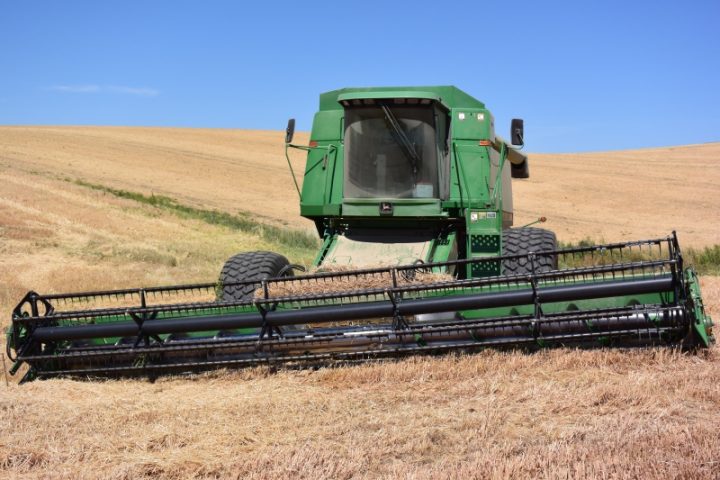Preventative Maintenance Helps Farm Tires Last Longer
Ag tires are built tough—they need to be to handle the numerous challenges they encounter on the farm, from transferring equipment horsepower to the ground to pulling tillage equipment and carrying massive loads of seed, spray, and commodities. The durability and ruggedness of the best ag tires can make it easy to overlook the demands placed on them, but devoting time to tire maintenance can pay off, especially when you consider that the price of a single tire can run hundreds or thousands of dollars.
A little preventative maintenance can go a long way to ensuring the long service life of your tire. Below are seven tips for making the most out of your investment in farm tires.
Both overinflation and underinflation can result in more than diminished tire life, they also increase fuel costs, lower productivity, and limit yields. Knowing the load on your tire and the manufacturer’s recommended psi, checking your tire’s air pressure as often as possible, and making adjustments as necessary is a proven formula for long-lasting tires.
A tread depth gauge is another inexpensive tool that pays off big on the farm. Get in the habit of checking the tread depth at a few different places on your tires. If a tire is wearing the tread unevenly, it’s a good indication that it’s operating at the incorrect inflation pressure, the tires may be improperly mounted, or there is a problem with the equipment.
There’s no clear-cut number for when to replace a tire, but a good guideline is that tires with only 20% to 30% of their original tread depth left are nearing replacement. It’s tempting to try to sneak another season out of a worn-out tire, but it can end up costing more in the long run as worn lugs reduce traction and increase slippage—decreasing productivity and increasing fuel costs.
New technology is helping to deliver longer performance as lugs wear. For instance, our Alliance Agri Star II features Stratified Layer Technology, a two-layer design that stacks a single-angle lug on top of a multi-angled lug and has more biting edges for grip. More rubber on the leading edge of each lug improves forward push, while a broader face on each lug reduces free-rolling resistance. Finally, the rear wall of each lug grips the soil harder during braking.
Before operating your equipment, examine tires for cracks, cuts, missing lugs, or bulges. While you’re at it, inspect the bead area for any damage caused by stalks, rocks, or other debris. If there is any damage that could potentially cause failure, consult your tire dealer to see if it will affect the tire’s performance/reliability or replace the tire to avoid costly downtime and ensure safe operation.
Prior to storing your equipment, clean any mud and dirt from the tires and remove any rocks or sticks stuck in the tread. Give the tires another look over to ensure there are no new concerns, such as a nail in the tire.
If you’re putting a piece of equipment away for the season, such as a planter at the end of seeding, it’s a good idea to overinflate the tires by 5 to 10 psi. For every 10° Fahrenheit in air temperature fluctuation, a tire’s pressure will change by 1 psi, so your tires will lose pressure in fall and winter. Overinflating tires provides extra air to compensate for varying temperatures and helps them maintain their shape over the off-season.
If putting a piece of equipment away for an extended period of time, check in on it periodically to ensure its tires have the optimal air pressure. Another option is to take the load completely off the tires.
Carrying more load than tires are capable of, or too much weight without sufficient air pressure in the tires, will wear tires quickly, over-exert sidewalls, and increase the odds of damaging the casing through stress cracking or overheating. Similarly, the inability to exert enough load on a tire can also have negative consequences. Tires operating at the low end of their allowable pressure range aren’t flexing in the manner they’re designed to, which speeds up wear along with reducing traction and causing soil compaction.
Keep your ag tires in mind when putting farm equipment away. Tires last longer when stored in cool, dry places out of direct sunlight. Also, keep tires away from sources of ozone—like electric motors and transformers—which causes the rubber to degrade and creates sidewall cracks. Likewise, prevent gas, oil, paint, solvents, and chemicals from coming in contact with tires—all of which can affect rubber compounds.
Investing in the right tires for the right job is a proven way to ensure long service life and maximum return on investment. Our Alliance brand has a tire designed specifically for almost every application on the farm. From special compounds and unique treads to innovative technologies like VF—such as our Alliance Agriflex+ 354—Alliance’s application-specific tires are engineered to last longer and perform better than our competition.
Contact your local dealer or rep to learn more about our line of Alliance brand tires and how your operation can benefit from them.


